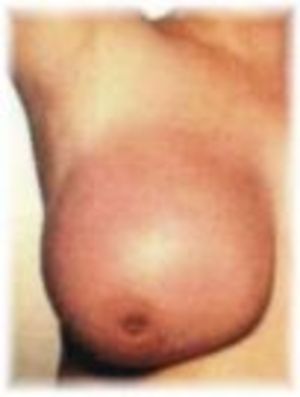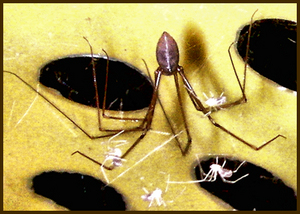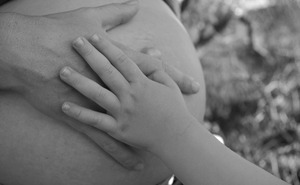Your breasts are red and inflamed, they itch like crazy, and your nipples have become slightly inverted. You pass it off as a rash or bug bites and don’t give it another thought after applying a topical cream for pesky skin irritations. Unfortunately many women have shared this thought process and it has cost them their life as the above symptoms could possibly be something much deeper then a simple rash.
Inflammatory breast cancer is an uncommon type of cancer that is silent, but deadly. The signs of the disease are easily passed off as one thing or another as the lumps often discovered with breast cancer are null and void or unnoticeable since the breast area can become swollen. Less noticeable symptoms that are easily mistaken for something else from redness and itching to swelling and thickness of the breast area are apparent signs of inflammatory breast cancer.
These changes within the breast can occur quickly as the disease is aggressive. Swelling in the lymph nodes under the arm or in the neck or a sudden bruise that appears on the breast that simply won’t go away are also signs that something is terribly wrong. This type of breast cancer is so rare that it is often wrongly diagnosed as a simple infection by doctors who send women away with a prescription of antibiotics due to a lack of scientific knowledge involving the deadly disease.
Inflammatory breast cancer comprises less than 4% of all breast cancers diagnosed each year in the United States, and rarely is a lump evident with this type of cancer as it grows along the chest wall and is usually diagnosed in the later stages, presumably after it has already long invaded the breast along with other vital organs.
Inflammatory breast cancer does not develop as a solid tumor and typically does not show up on a mammogram. The only sure way to confirm a diagnosis of inflammatory breast cancer is through a skin biopsy, and it is usually classified as Stage III cancer unless it has spread to the lymphatic system or other organs of the body, and then it is classified as Stage IV, or advanced breast cancer.
The Symptoms of Inflammatory Breast Cancer
The symptoms are very different in each woman, but they can include a lump in the breast, a discharge from the nipple, inverted nipples, a heavy feeling of breast enlargement or thickness, pain in the breast or nipple, warmth, redness, and swelling. Many women notice ridges on the skin of the breasts that appear pitted, like that of an orange, giving a vital warning sign to seek medical attention.
The Stages of Breast Cancer
Stage I: The cancer is no larger than 2 centimeters and has not spread outside the breast.
Stage II: The cancer is less than 2 centimeters in diameter, but it has spread to the lymph nodes under the arm or the cancer is between 2 and 5 centimeters or more, and it may or may not have spread to the lymph nodes under the arm.
Stage IIIA: The cancer is smaller than 5 centimeters and has spread to the lymph nodes under the arm or the cancer is larger than 5 centimeters and has not spread to the lymph nodes under the arm.
Stage IIIB: The cancer has spread to tissues near the breast such as the skin or chest wall, including the ribs and the muscles in the chest or the cancer has spread to lymph nodes inside the chest wall along the breast bone.
Stage IV: The most serious stage and quite often deadly as it has spread to other organs in the body, most often the bones, lungs, liver, or brain. In this stage the tumor has also spread locally to the skin and lymph nodes inside the neck, near the collarbone as well.
The treatment for inflammatory breast cancer is usually 3 to 6 sessions of chemotherapy, followed by mastectomy. More conventional or high-dose chemotherapy may be given after surgery, depending on the level of tumor response. Most IBC patients have radiation to the chest wall after surgery and chemotherapy. Many women follow up their treatment with hormonal drugs.
Facts about Inflammatory Breast Cancer
Various studies on this deadly disease show a 40% five year survival rate for patients after the initial diagnosis.
It is unique because it often does not present itself with the familiar breast cancer lump, which makes it harder to detect by mammography or ultrasound.
Inflammatory breast cancer is often mistaken as a breast infection known as mastitis which causes painful areas on the breasts or nipples, and is often accompanied by a fever or flu like symptoms.
Approximately 1% to 2% of newly diagnosed invasive breast cancers that have spread beyond the breast in the United States are described as inflammatory breast cancers.
The greatest challenge with treating IBC is that it is difficult to measure a response since a nodule or mass is usually not present in standard beast detection procedures.
Each year, 182,000 women are diagnosed with breast cancer and 43,300 of them will die. One woman in eight either has or will develop breast cancer in her lifetime.
IBC is often misdiagnosed as shingles.







